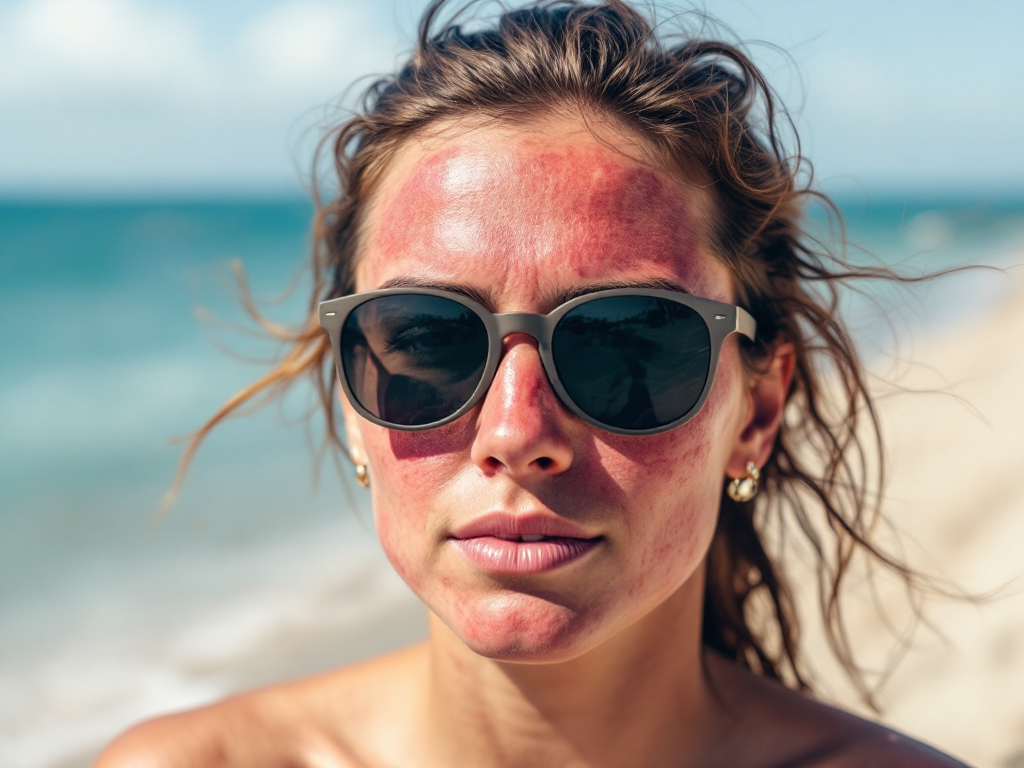
The sun in the cabin - invisible dangers
Share
Modern beauty standards often promote tanned skin as a symbol of health and attractiveness. However, the pursuit of a perfect tan using a tanning bed carries serious health risks. Based on numerous studies and statistics, professional cosmetologists are sounding the alarm: it's time to give up this form of artificial sun.
The fashion for tanning, although common today, has its own fascinating history and complex effects on health. From the early 20th century, when pale skin was a status symbol, we have moved on to the cult of the tanned body. However, tanning, whether natural or in a tanning bed, carries numerous health risks.
History of tanning fashion
The fashion for tanned skin began with style icon Coco Chanel. In the 1920s, she accidentally got a tan while cruising the Mediterranean. Her tan suddenly became a symbol of health, luxury and modernity, which encouraged other women to follow suit. Within a few decades, tanned skin became a marker of attractiveness, and its popularity grew with the emergence of beach and bikini culture in the 1950s and 1960s.
Is tanning harmful?
Scientific studies unequivocally show the harmfulness of overexposing the skin to UV radiation. According to the World Health Organization (WHO), UV radiation is one of the main risk factors for skin cancer, including melanoma, which is the most aggressive form of this disease. Statistics show that regular use of tanning beds before the age of 30 increases the risk of this cancer by 75%.
Excessive tanning also leads to photoaging, or premature aging of the skin, which manifests as wrinkles, loss of elasticity and hyperpigmentation. A study published in the Journal of Clinical and Aesthetic Dermatology indicates that up to 80% of visible signs of skin aging are caused by sun exposure.
Is there safe tanning?
Experts agree that there is no such thing as completely safe tanning. Even moderate sun exposure can lead to skin damage at the cellular level. Nevertheless, it is possible to minimize the risks associated with tanning through proper protection:
- use of sunscreens
Using creams with a high SPF (at least 30) helps reduce the amount of UV radiation reaching the skin.
- moderation and avoiding the most intense sun
Avoiding exposure between 10 a.m. and 4 p.m., when UVB radiation is strongest, can be key to protecting the skin.
- protective clothing and accessories
Wearing hats, sunglasses and long-sleeved clothing are additional protective measures.
- sunbeds vs. safety
Organizations such as the American Academy of Dermatology strongly discourage the use of tanning beds due to the increased risk of skin cancer.
What are the risks?
- risk of skin cancer
One of the most serious risks associated with the use of tanning beds is the increased risk of skin cancer.
- premature aging of the skin
UV radiation is one of the main factors that accelerate skin aging. Regular use of tanning beds can lead to wrinkles, discoloration and loss of skin elasticity. Studies show that up to 90% of visible signs of skin aging are the result of UV exposure.
- harm to eyes
Eyes are extremely susceptible to UV damage. Without proper protection, tanning bed use increases the risk of corneal damage and can lead to the development of cataracts. According to the American Ophthalmological Society, frequent exposure of the eyes to artificial UV radiation is one of the significant risk factors for eye health.
- loss of natural skin protection
While a tan may seem attractive, it is actually a form of skin's defense response to UV damage to DNA. Frequent use of tanning beds can weaken the skin's natural protective mechanisms, making it more susceptible to disease.
- alternatives to tanning beds
Fortunately, there are alternatives to tanning beds that offer safe ways to get a tan. Bronzing cosmetics, self-tanners and tanning sprays are widely available and do not carry the risks associated with UV radiation.
Summary
The fashion for tanning did not arise by accident - it was the result of social changes and the influence of cultural icons. Although tanning is often associated with an attractive appearance, its effects can be dangerous. Raising awareness about the risks of UV exposure and educating people about the importance of sun protection is key. Healthy skin is always in fashion, and protecting it should become our priority.